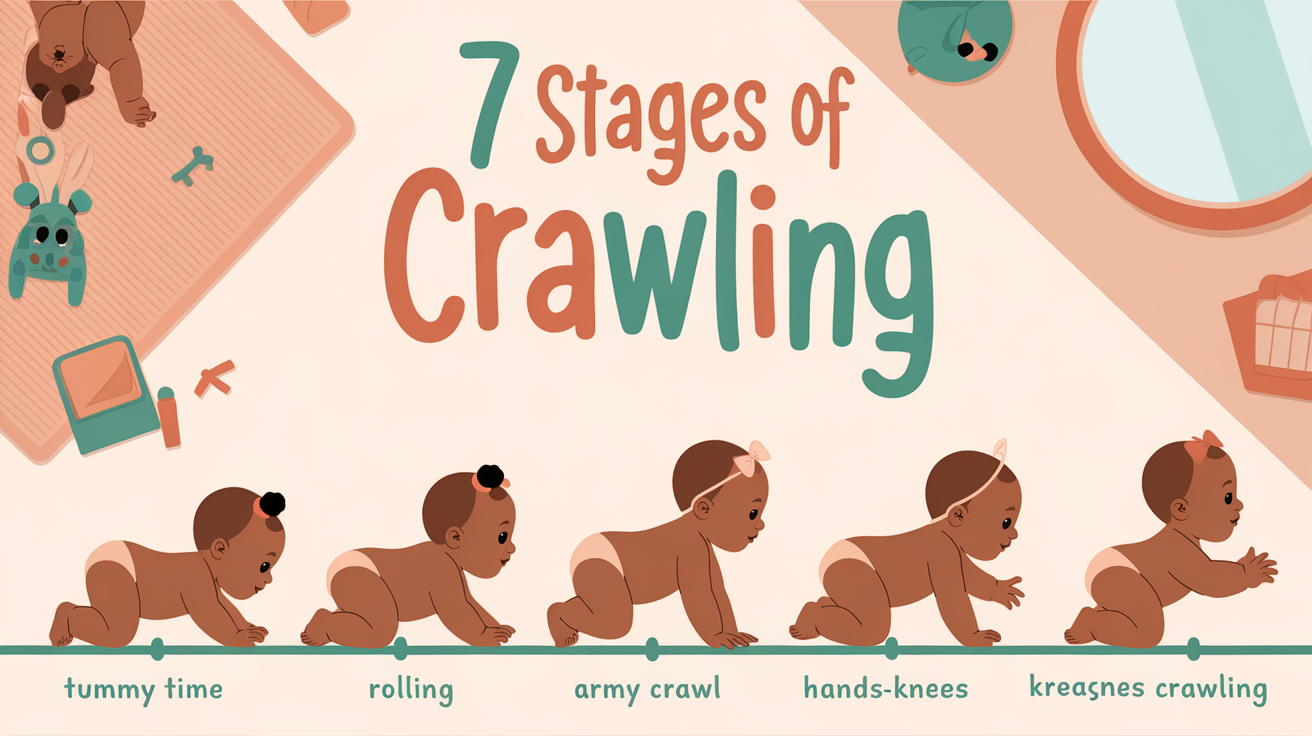
Watching their little one move for the first time is a moment parents cherish forever. Crawling marks an important growth step in which babies gain independence and build muscle strength.
Before mastering full crawling, infants progress through several phases, each building necessary skills. Understanding these developmental stages helps parents support their child’s natural progress.
As babies learn to control their bodies, they’ll rock, scoot, and eventually move forward. This physical growth connects directly with brain development, too.
Knowing what to expect during this time lets you create safe spaces for practice and offer the right kind of support. Watch for these key phases as your baby begins their mobility trip!
Why Crawling Is an Important Milestone?
Crawling marks a key step in baby growth. It helps build arm and leg muscles while improving hand-eye teamwork.
When babies move across the floor, they learn to plan paths and make choices. This boosts brain growth and problem-solving skills.
The back-and-forth motion helps connect the left and right sides of the brain, creating important pathways for later learning. Crawling also gives babies new ways to see and touch their world. They can now reach toys and follow things that catch their eye.
Parents should make safe spaces for floor play. Giving babies time on their tummy helps build needed strength.
While some babies skip crawling, this stage offers many growth benefits that help with walking and future movement skills.
The 7 Stages of Crawling
Stage 1: Tummy Time

During this first phase, little ones build important muscle strength. They lift their heads and push up with their arms, setting the groundwork for future movement.
Babies typically begin this phase shortly after birth. Parents can help by placing toys just out of reach to motivate their little ones to stretch and strengthen.
Stage 2: Rolling Over

This milestone shows the baby’s growing body control and spatial awareness. They flip from back to front and eventually master the return journey.
The excitement of seeing new views motivates continued practice. This back-and-forth motion helps babies understand how their bodies move through space.
Stage 3: Rocking on All Fours
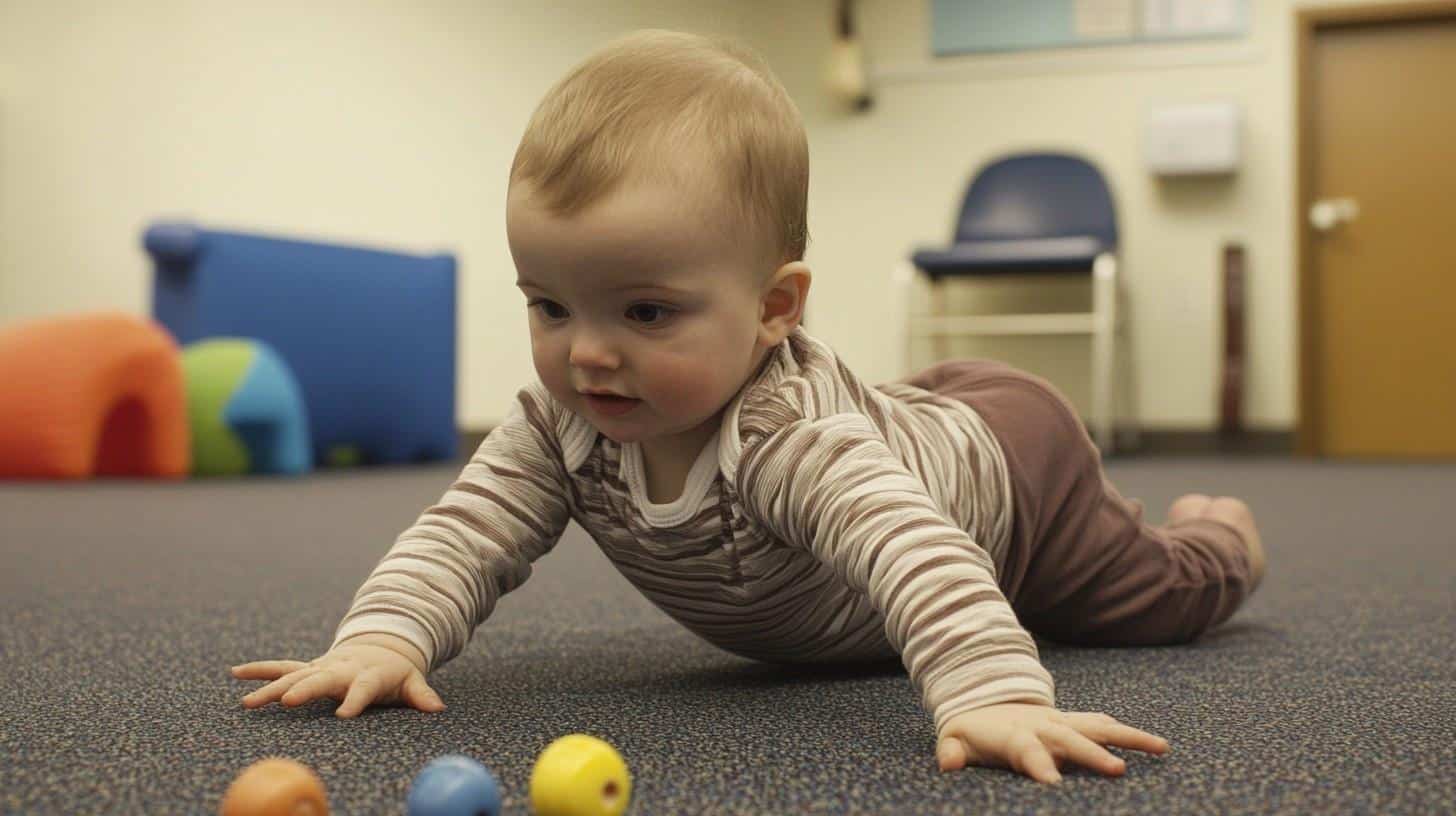
Babies test their stability as they shift weight between hands and knees. This gentle swaying builds the core strength needed for forward motion.
Look for determined concentration during this phase. Their brain is working hard to coordinate multiple muscle groups at once.
Stage 4: The Backward Scoot
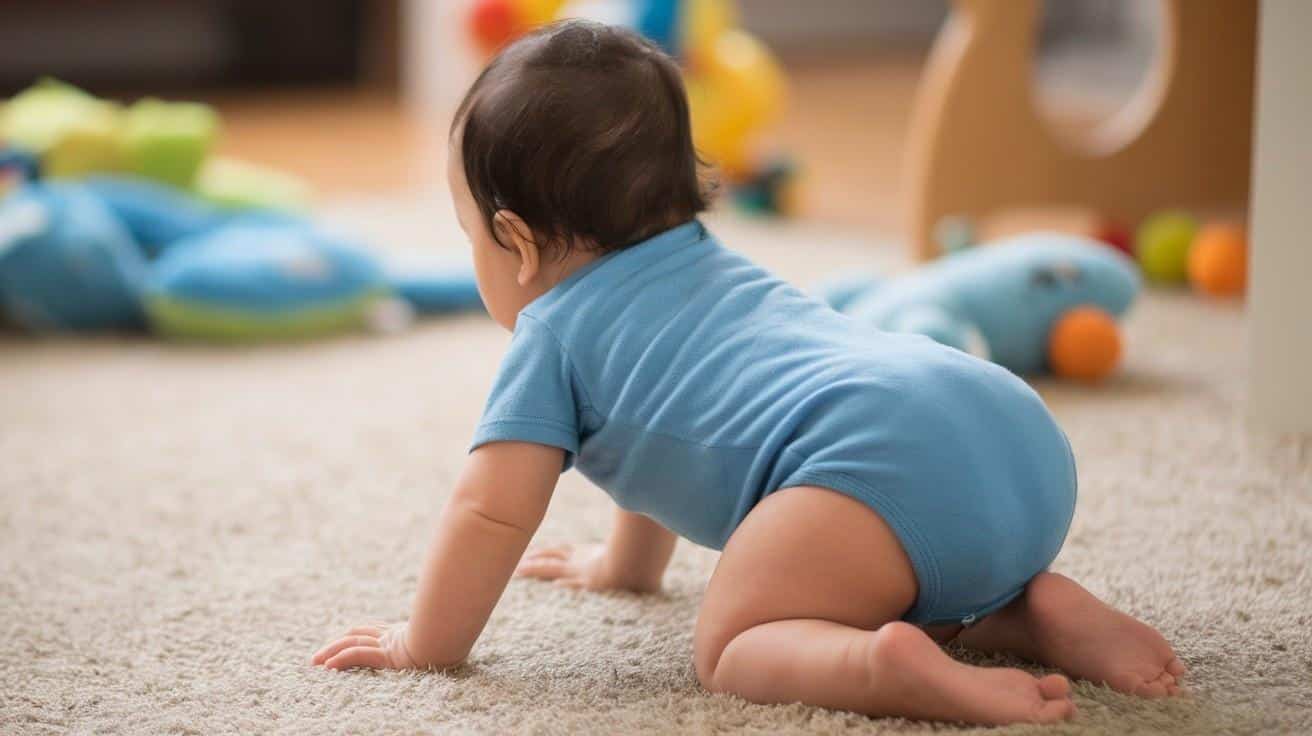
Many babies surprisingly move in reverse first! They push with their arms but haven’t figured out how to pull forward yet.
Parents might notice their little ones looking confused when they end up further from their goal. This backward movement is completely normal and shows growing coordination.
Stage 5: The Army Crawl
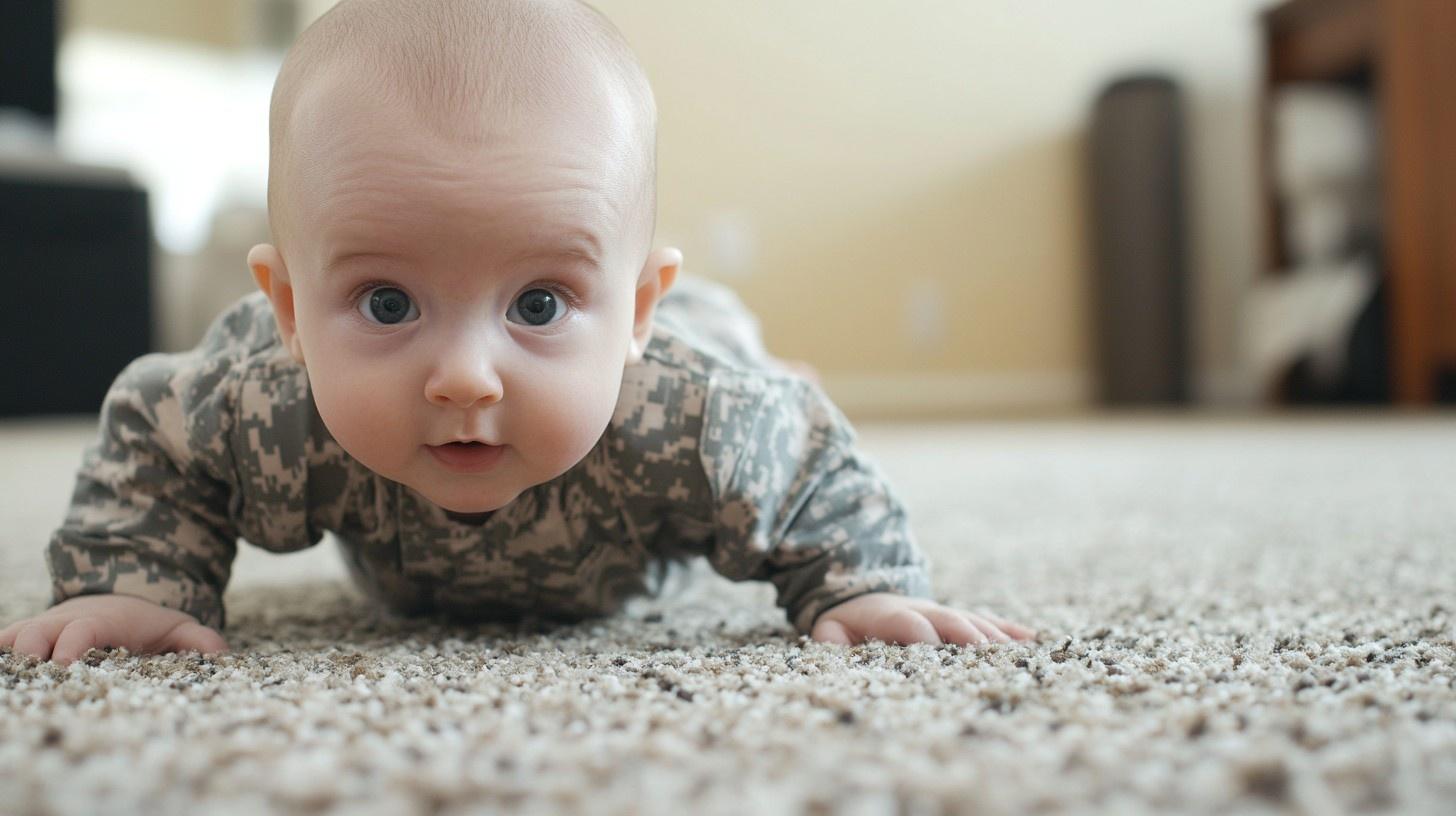
Babies pull themselves forward using mainly upper body strength. Their tummy stays on the floor as they drag themselves toward desired objects.
This method allows for mobility before full coordination develops. Some babies prefer this technique for weeks before advancing to the next stage.
Stage 6: Hands-and-Knees Crawling
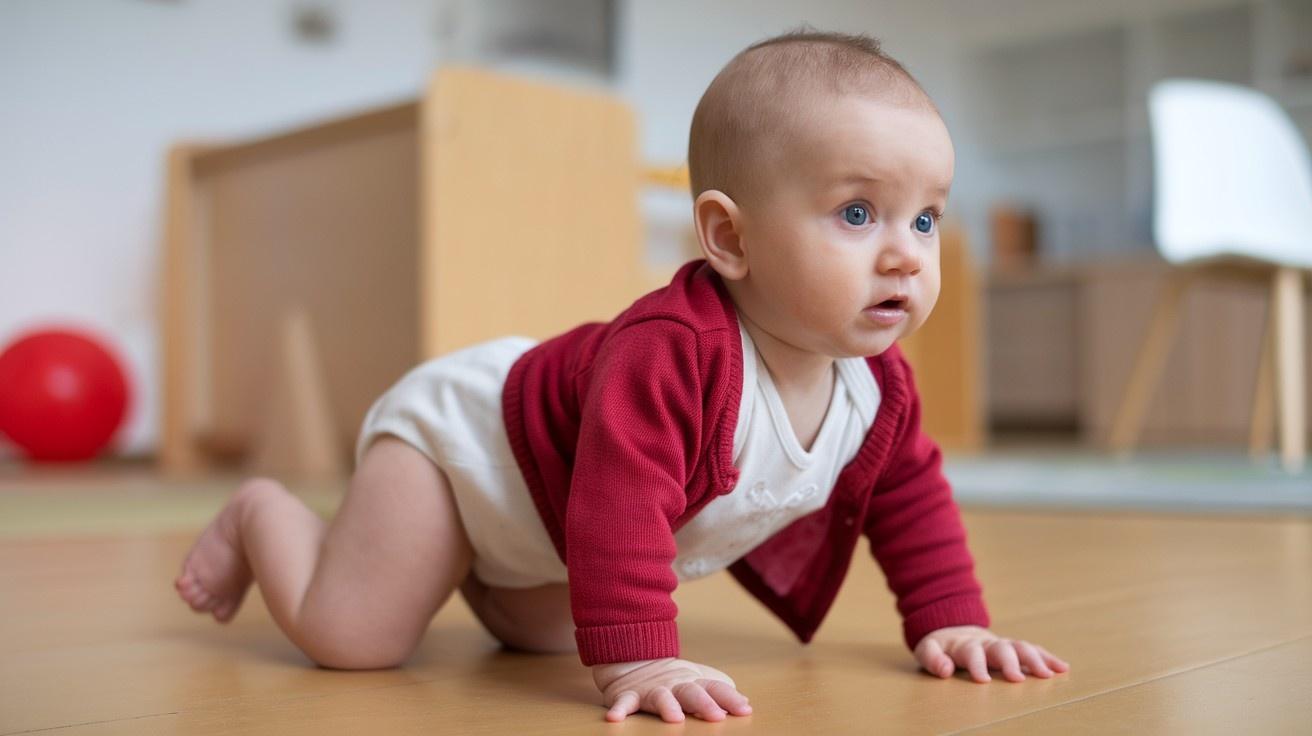
Now, babies achieve the classic crawling position with synchronized movement. They alternate opposite limbs in a smooth pattern to move efficiently.
Speed increases rapidly as confidence grows. This four-point movement creates connections between brain hemispheres that support future learning and development.
Stage 7: Cruising and Standing
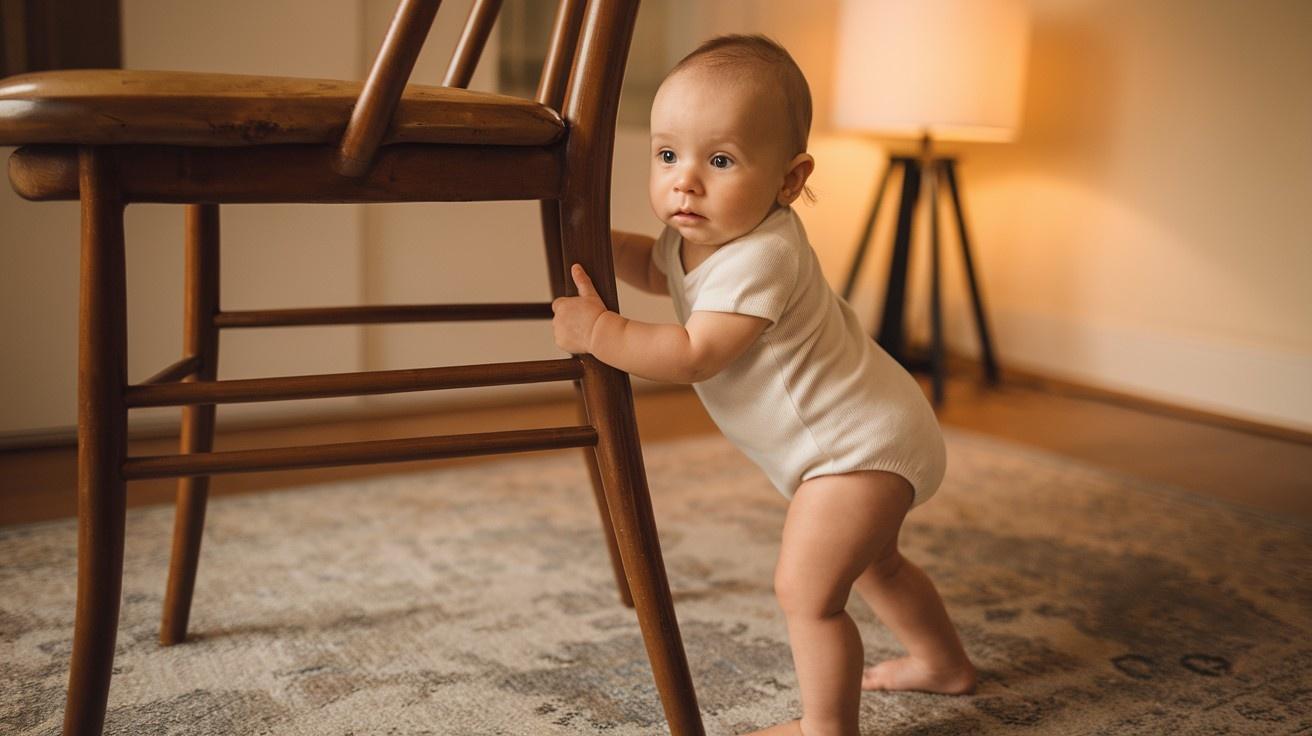
The final stage combines crawling with pulling up to stand. Babies hold furniture while taking sideways steps, building leg strength.
This transition phase bridges crawling and walking. The growing confidence in their balance and strength prepares them for those exciting first independent steps.
When Do Babies Start Crawling?
Most babies begin moving on their tummies between 6-10 months old. Each child grows at their own pace, with some starting earlier or later.
Before full crawling, babies often rock back and forth or scoot backward. This happens around 5-6 months as they build strength.
Some little ones skip crawling completely, moving straight to pulling up or bottom-shuffling instead. Parents should offer tummy time daily to help build needed muscles.
By 9-12 months, many babies start pulling themselves up on furniture. Standing with support often follows soon after crawling begins.
If your baby hasn’t started moving by 12 months, check with your doctor. Most delays are normal, but sometimes, extra help is useful for muscle growth.
Tips to Encourage Crawling
Make tummy time fun with colorful toys placed just out of reach to motivate forward movement. A small rolled towel under the baby’s chest can also make this position more comfortable.
Create a safe space by removing hazards and adding textured mats that provide a good grip for tiny hands and knees. Different surfaces offer sensory input that builds muscle memory.
Position toys in a circle around your sitting baby to prompt reaching in all directions. This builds the core strength needed for crawling.
Get down on the floor at the baby’s level to show them how to move. Your presence makes practice more fun. Remember that all babies grow at their own pace. Some may skip crawling altogether, which is perfectly normal.
Special Tip: Use a mirror during tummy time. Babies love seeing their reflection, which encourages them to lift their heads and engage more actively.
Common Concerns About Crawling
Many parents worry when their child doesn’t follow typical movement milestones. Some babies may bypass traditional crawling, opting instead for scooting, rolling, or bottom-shuffling to get around.
This variation is often normal. Studies show that 10-15% of infants use these different methods of mobility before walking. Child development occurs on individual timelines rather than strict schedules.
Medical professionals suggest that while crawling offers benefits for coordination and muscle growth, children who skip this phase typically catch up in motor skills. What matters most is that your baby shows motivation to move and can change positions independently.
If you are concerned about your child’s movement progress, consulting with a pediatrician can provide guidance based on overall developmental patterns rather than focusing solely on one milestone.
Most Common Concerns:
- “Is it normal for my baby to skip crawling and go straight to walking?”
- “Should I be worried if my baby is only scooting or rolling instead of crawling?”
- “At what age should I be concerned if my baby hasn’t started crawling yet?”
Final Thoughts
Baby crawling has seven key stages: tummy time strength-building, rocking on all fours, crawling backward, army crawling, proper hand-knee crawling, speed crawling, and finally, transitioning to pulling up.
Each baby moves through these phases at their own pace, usually between 6-10 months.
Some babies might skip certain stages or develop their unique movement patterns. Parents can help by providing safe floor space and making time for practice.
Watch for milestones, but remember that development varies widely between children. Celebrate small progress and consult with doctors only if you are concerned about significant delays.
Your baby will soon be on the move!
